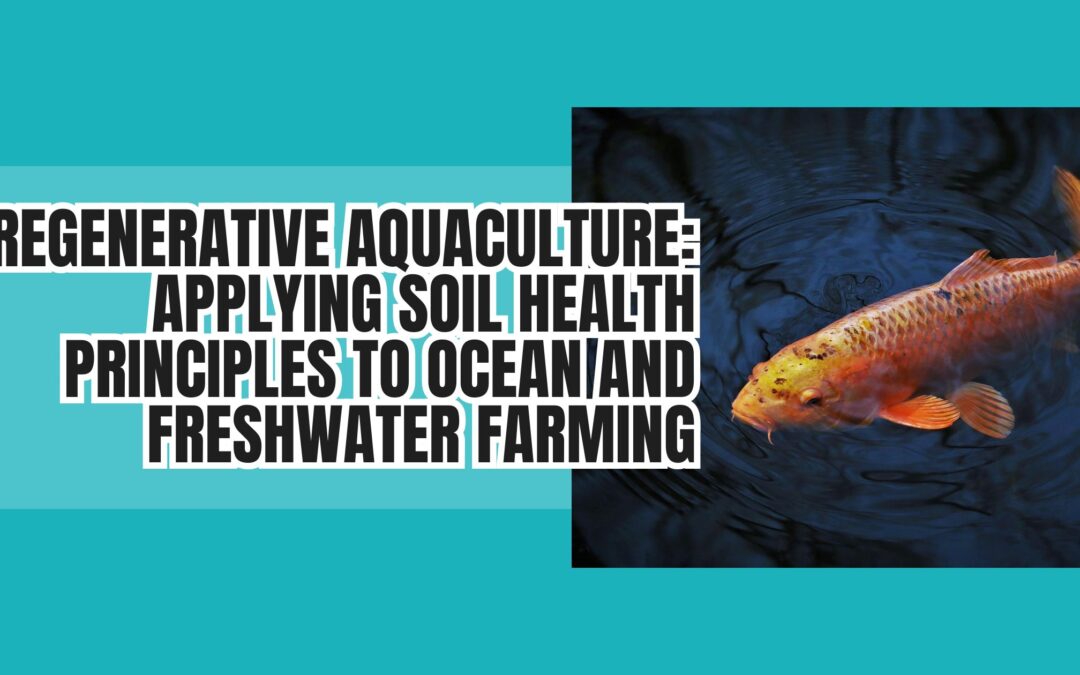Regenerative agriculture has evolved from being a buzzword to a vital global movement focused on restoring ecosystems, improving soil health, and addressing the impacts of climate change. Today, this same philosophy is being extended to aquatic environments through regenerative aquaculture.
As the demand for seafood grows and wild fish populations decline, aquaculture has become a key player in global food systems. Unfortunately, conventional fish farming often mirrors industrial agriculture—relying on synthetic feeds, antibiotics, and monoculture systems that can contaminate waterways and disrupt marine ecosystems.
Regenerative aquaculture challenges this paradigm by applying soil health principles to oceans and freshwater. Its core aim is not just to produce seafood, but to restore aquatic ecosystems, increase biodiversity, and enhance resilience.
What is Regenerative Aquaculture?
Regenerative aquaculture is about cultivating species that improve their environment instead of harming it. Similar to regenerative farming’s focus on soil organic matter and microbial life, regenerative aquaculture enhances aquatic ecosystems by improving nutrient cycling and water quality.
For example, filter feeders such as clams, mussels, and oysters naturally clean the water as they feed—removing excess nutrients and boosting ecosystem health.
At the same time, seaweed farming requires no fertilizer or feed while absorbing carbon and nitrogen, sequestering greenhouse gases, and creating habitat for marine life. These living systems act as underwater “forests,” supporting marine biodiversity while producing sustainable food and raw materials.
Polyculture and Ecosystem Mimicry
One of the defining features of regenerative aquaculture is ecosystem mimicry. Unlike monoculture fish farms, which often lead to disease and pollution, regenerative systems embrace polyculture.
Integrated multi-trophic aquaculture (IMTA) combines species like seaweed, shellfish, and finfish so that the waste from one species becomes food for another. This natural balance creates:
- Nutrient-rich environments that mimic wild food webs
- Higher productivity with reduced reliance on synthetic inputs
- Healthier seafood with a lower environmental footprint

Regenerative Aquaculture and Climate Change
Regenerative aquaculture is also a natural ally in the fight against climate change. Seaweed, in particular, is a powerful carbon sink capable of absorbing large amounts of CO₂ while growing rapidly. Responsible harvesting opens pathways to industries like:
- Human nutrition and superfoods
- Animal feed alternatives
- Biodiesel production
- Biodegradable packaging
By reducing ocean acidification and capturing greenhouse gases, regenerative aquaculture helps mitigate climate change while creating sustainable economic opportunities.
Community Resilience and Food Sovereignty
Beyond environmental benefits, regenerative aquaculture fosters food sovereignty and community resilience. Small-scale, diversified aquaculture systems:
- Support local jobs and coastal economies
- Provide year-round, nutritious seafood
- Restore degraded aquatic habitats
Projects such as GreenWave’s ocean farming model demonstrate how regenerative aquaculture can empower communities to produce food locally while protecting ecosystems for future generations.
Conclusion
Regenerative aquaculture represents a fundamental shift in how we approach seafood production. By synchronizing with natural cycles, enhancing biodiversity, and restoring ecosystems, it offers a resilient and sustainable way to nourish a growing global population.
This approach moves us beyond exploitation, toward a future where oceans, rivers, and lakes thrive alongside humanity.
Want to dive deeper into regenerative solutions for food and the planet?
Get access to valuable information and community resources at EAT Community.
References & Related Articles
- FAO (2020). The State of World Fisheries and Aquaculture.
- NOAA Fisheries. Aquaculture and Sustainability.
- Naylor, R. et al. (2021). “A 20-year retrospective review of global aquaculture.” Nature. Link.
- Chung, I. et al. (2017). “Seaweed as a global solution for carbon capture and climate change.” Nature Sustainability. Link.
- Duarte, C. et al. (2017). “The role of marine vegetation in climate change mitigation and adaptation.” Frontiers in Marine Science. Link.
- GreenWave (2023). Regenerative Ocean Farming.



